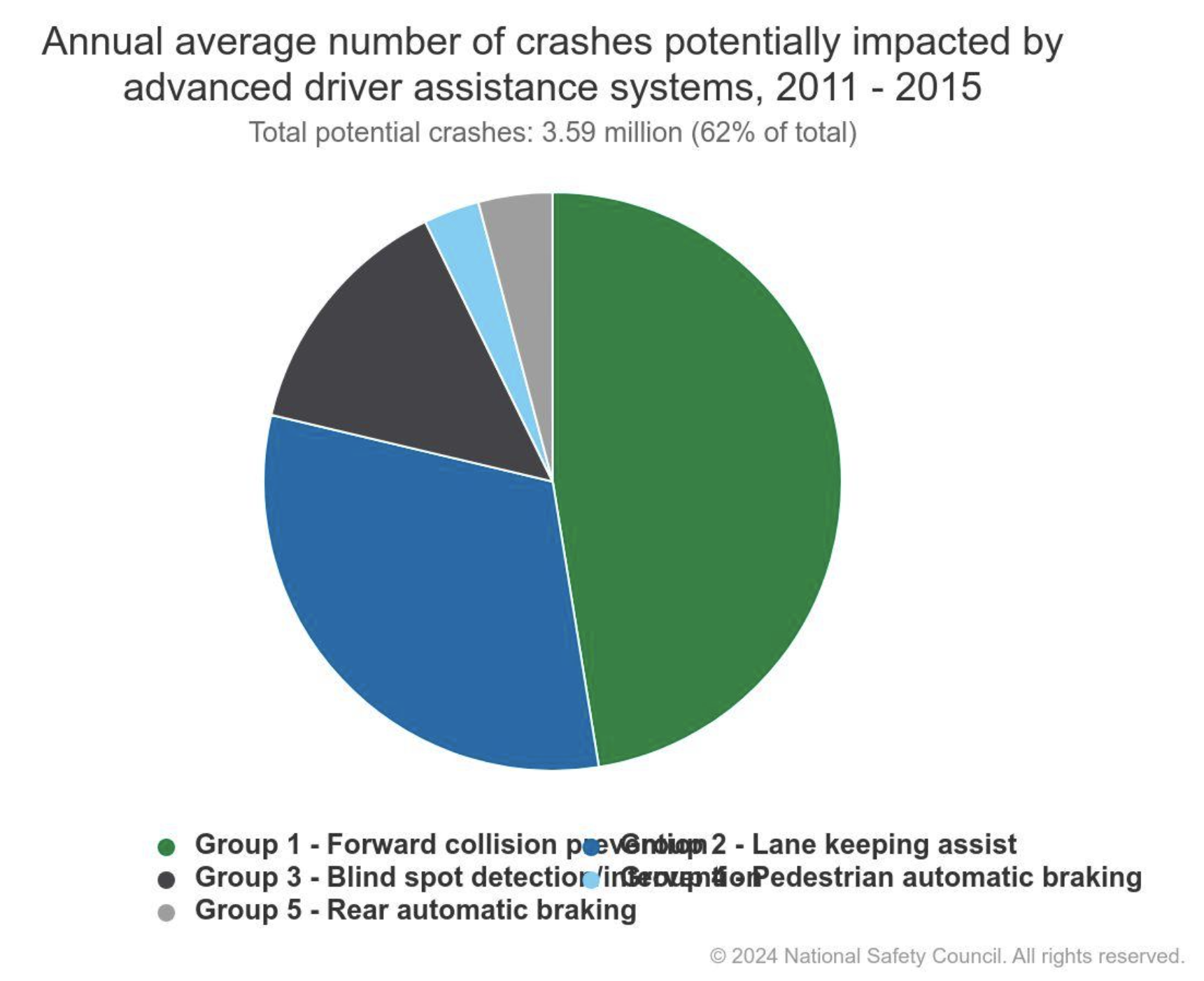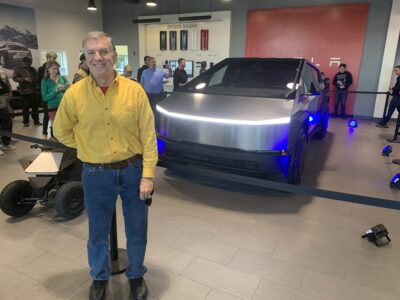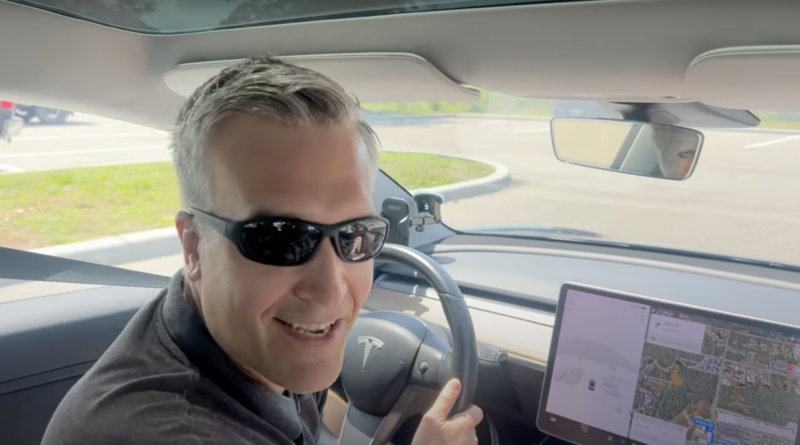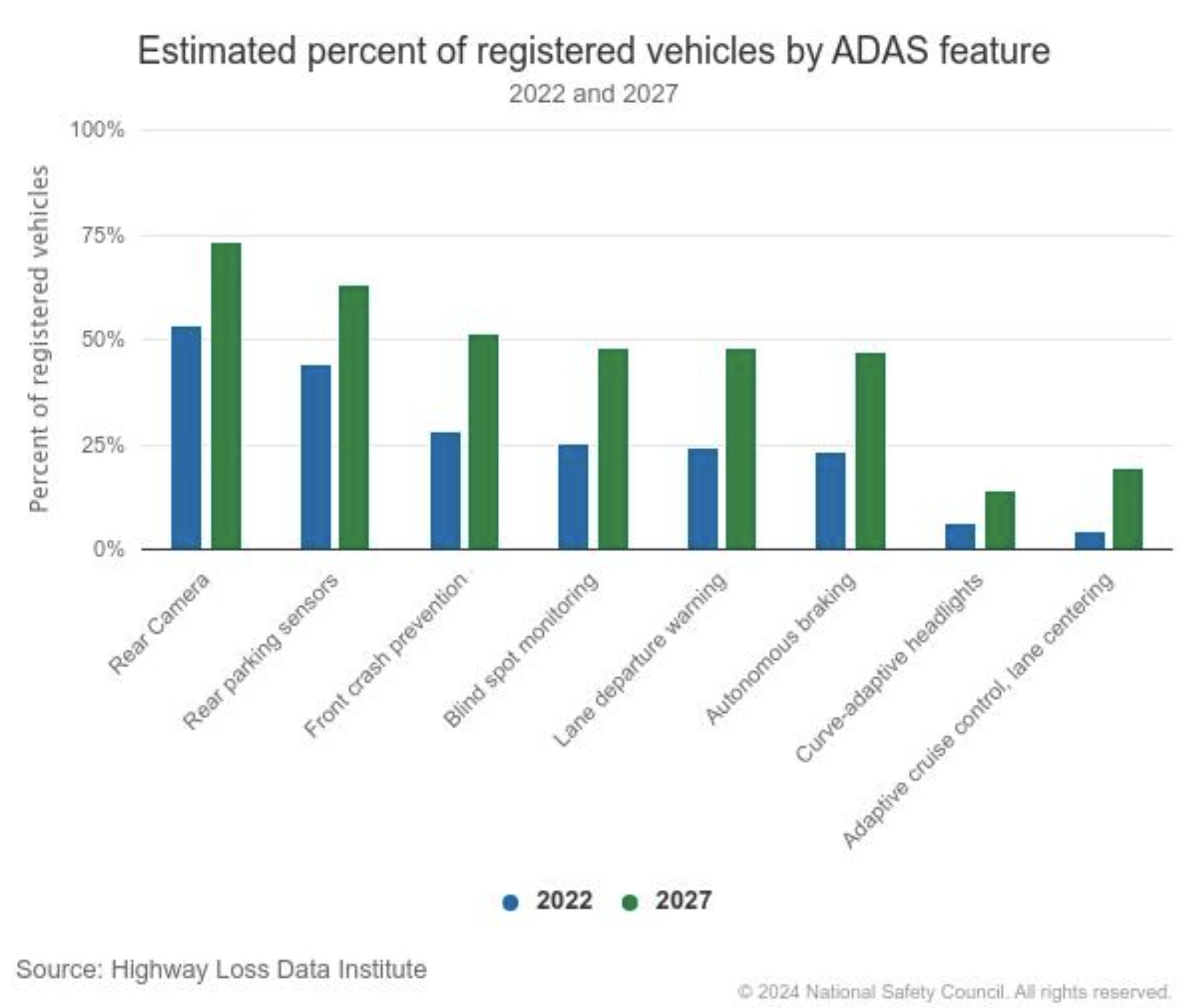Are Advanced Driver Assist Systems Safer? And What’s Next?
For some time, I have been met with pitchforks over declaring the safety of advanced driver assist systems (ADAS). The shortest articulation for this measure is to not crash, or to not perform maneuvers that could cause you or others to crash. But is there any data to back up this safety claim?

According to the National Safety Council, using data from the Insurance Institute for Highway Safety’s Highway Loss Data Institute, here are some staggering statistics regarding the use of ADAS.
Forward Collision Warning with Autobrake
- 50% fewer front-to-rear crashes.
- 56% fewer front-to-rear crashes with injuries
- 14% fewer claim rates for damage to other vehicles
- 24% fewer claim rates of injuries to people in other vehicles
- 41% fewer large truck front-to-rear crashes
Automatic Emergency Braking with Pedestrian Detection
- 27% fewer pedestrian crashes
- 30% fewer pedestrian injury crashes
Lane Departure
- 11% fewer single-vehicle sideswipe and head-on crashes
- 21% fewer injury crashes of the same type
Blind Spot Detection
- 14% fewer lane-change crashes
- 23% fewer lane-change crashes with injuries
- 7% fewer claim rates for damage to other vehicles
- 8% fewer claim rates for injuries to people in other vehicles
Rear Automatic Braking
- 78% fewer backing crashes (when combined with rearview camera and parking sensors)
- 29% fewer claim rates for damage to other vehicles
- 9% fewer claim rates for damage to insured vehicle
I’m sorry, but I get excited over those statistics! All ADAS systems will continue to grow in their capability. Most manufacturers have some ADAS features as standard and some as options now. So, why isn’t everyone excited over these numbers? For one, many questions are based on observed experiences. Most auto manufacturers have at least some glitches in their ADAS, causing consumers to lose trust in some of the features and sometimes the complete system, declaring it unsafe and often causing them to stop using their systems. Meanwhile, the gorilla in the room is Tesla and its promise of a self-driving system it markets under the name FSD, short for Full Self Driving.
Advance driver assist systems + self-driving features
While Tesla has yet to achieve more than a level 2 autonomous system, it has elected to continually add tools on its path to a promised self-driving system. Some of the features are found in all ADAS, and some are, well, more advanced. Many argue that Tesla’s approach will never achieve self-driving in that every advanced drive assist feature has to work into the nines, or 99.99(?) percent of the time.
Tesla continues to add advanced driver tools that sometimes fail. Some automatically conclude that it isn’t safe. So, how do we explain the safety data presented by the NSC? Indeed, Tesla’s and other systems fall short of self-driving while maintaining a level of safety. I am a long-time user of Tesla’s FSD system. While Musk has for years declared that the next version is mind-blowing or an autonomous fleet is months away, Tesla continues to classify its system as a level 2 ADAS.
There are two important points about all versions before Tesla’s Version 12, which was released in the first quarter of 2024. First, all previous coded versions were shelved as a self-driving system in favor of a neural net solution. For me, there was one remarkable statistic regarding early versions: As shaky as the early versions were, they did not increase the number of crashes. This is the mind-blowing part, for, as an early user, I expected utter chaos when it was released to the masses. To my surprise, there were minimal crashes. I didn’t see the NCS single out any particular manufacturer for its provided data set. My takeaway is respect for human testing, defensive driving by others, and a respectable suite of advanced driver-assist tools.
My method for evaluating ADAS
From the beginning, I tested every new version sent by Tesla FSD beta. Some early versions were so horrific that my testing often consisted of one trip before I patiently waited for the next release. Version 12 is where we all wanted to start. While it is far from the nines of self-driving, it is an utter joy to test and a fantastic ADAS.
My testing method is as follows: Did I experience something that would have caused either my vehicle or another to crash? Secondly, did it have the potential for me or others to crash?
Along the way, testers have experienced failures as well as remarkable maneuvers. Here is an example of what I would classify as mind-blowing using V12.36. I encountered the following edge case while exiting a very busy interstate with heavy congestion onto a four-lane road with more heavy congestion. No less than eight people were on the side of the road addressing a medical emergency. On the road, right of the exit, were three cars parked in the right road lane. The first two had their doors open, where the person on the ground probably exited. The third vehicle was a truck parked behind the two while partially blocking the right turn lane by fifty percent or more, causing quite the maneuver to make a right turn. Once the light turned green, the car in front perfectly maneuvered to the left to avoid the parked truck and then right onto the only available lane. V12.36 FSD did the same without hesitation. The car behind me hesitated, thus causing a potential accident. According to the Journal of Transportation, ten percent of accidents are caused by rubbernecking. In this case, more than one human was responsible for maneuvers open to a potential accident.
While searching for how many accidents are caused by onlookers, I discovered that two million accidents were caused by failure to use turn signals. I include this to draw attention to the human hubris of failing to acknowledge our participation in automotive accidents. It is also an easy win for ADAS.
Here is another. Should we ban texting devices when they are responsible for crashes? The National Safety Council reports that 1.6 million crashes are caused by the use of these devices annually while driving. Comparing the exact ratios for danger is difficult, but you get my point.
Some are ready to ban any system for causing a single fatality.
Others want names like Full Self Driving banned for false advertising. Some even want the name Autopilot removed. Fun fact: Modern cruise control (also known as a speedostat or tempomat) was invented in 1948 by the blind inventor and mechanical engineer Ralph Teetor. The first car with Teetor’s “speedostat” system was the 1958 Chrysler Imperial (called “auto-pilot”), which used a speed control dial on the dashboard.
Bring out the knives
Tesla’s FSD, as of this writing, has not achieved self-driving, nor does Tesla claim to have done so. The product continues to be released for testing, and for many, the safety concern continues. Some are mad over the name and/or failure to deliver self-driving, concluding that it is, or will be, less safe. I am, and will continue to be, excited about any engineering feat that makes the roads safer. Per the NSC, ADAS has proven this to be true, and so far, Tesla’s added self-driving beta tools have not diminished overall safety.
Front-to-rear crashes are some of the scariest and the deadliest. I don’t know of any ADAS that has mastered this completely, yet NSC reports a fifty percent reduction in vehicle accidents when equipped with automatic braking. Some still can’t get excited at that number until it is perfect, arguing that the inconsistency makes the vehicle less safe. The NSC report suggests otherwise. Meanwhile, the path we travel is safer due to ADAS. Please forward all complaints to the Insurance Institute for Highway Safety, Highway Loss Data Institute.
 By Mark Hovis. Mark Hovis is a retired engineer. He sold his engineering firm, Metrology Engineering Applications Solutions, in 2002 and became enamored with renewable energy. It started with simple passive solar collectors, followed by self-installed solar thermal potable water, a whole house solar array, a geothermal heat pump, and more. Mark owns and manages a dozen single-home dwellings where we provide 14-50 240V plugs free of charge. Three of our units now have 3 kW solar arrays to offset their energy and increase awareness. I live in a semi-rural setting where I am one electric truck and electric tractor away from being fully electric. I have devoted my remaining time toward transitioning our society to clean energy through public speaking and personal practice.
By Mark Hovis. Mark Hovis is a retired engineer. He sold his engineering firm, Metrology Engineering Applications Solutions, in 2002 and became enamored with renewable energy. It started with simple passive solar collectors, followed by self-installed solar thermal potable water, a whole house solar array, a geothermal heat pump, and more. Mark owns and manages a dozen single-home dwellings where we provide 14-50 240V plugs free of charge. Three of our units now have 3 kW solar arrays to offset their energy and increase awareness. I live in a semi-rural setting where I am one electric truck and electric tractor away from being fully electric. I have devoted my remaining time toward transitioning our society to clean energy through public speaking and personal practice.
Have a tip for CleanTechnica? Want to advertise? Want to suggest a guest for our CleanTech Talk podcast? Contact us here.
Latest CleanTechnica.TV Videos

CleanTechnica uses affiliate links. See our policy here.


